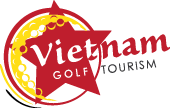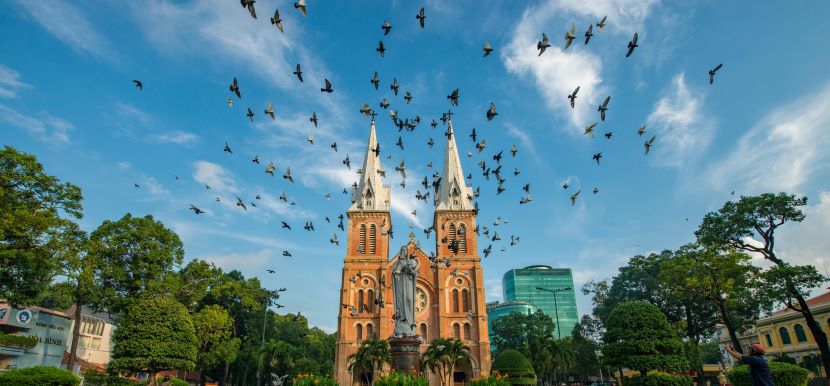Dong Nai Turns Heritage And Nature Into Sustainable Tourism Driving Cultural And Economic Growth
The southern province of Dong Nai has been striving to transform its abundant resources into sustainable growth opportunities. With a strategic location that links the Southeastern region to the Central Highlands while also connecting with Cambodia, Laos, and Thailand, Dong Nai is considered a gateway of both cultural exchange and economic cooperation. Its abundant tourism resources, diverse landscapes, and cultural richness make it well positioned to build a green economy that is increasingly attracting interest from domestic and international visitors.
The provincial authorities have identified tourism as a powerful vehicle to drive sustainable development. By combining heritage preservation with eco-friendly practices, Dong Nai seeks to balance economic benefits with environmental protection while also creating new opportunities for local communities.
A Rich Mosaic of Cultural and Natural Heritage
Dong Nai’s history stretches across thousands of years, leaving behind cultural imprints that continue to shape the region’s identity. The province is dotted with natural and historical landmarks that have been drawing attention from travelers in search of both adventure and authenticity.
Notable examples include Bu Gia Map National Park, well known for its diverse flora and fauna, and the Sac Mangrove Forest in Nhon Trach, which represents an important ecological treasure. Meanwhile, the S’tieng Ethnic Cultural Reserve in Bom Bo allows travelers to immerse themselves in the spiritual and artistic expressions of local minorities. The crown jewel, however, is the Dong Nai Cultural and Nature Reserve, which spans over 100,000 hectares and was recognized as a UNESCO Biosphere Reserve in 2011. This acknowledgment not only underscores the global significance of the site but also highlights its potential as a foundation for eco-tourism development.
Dong Nai is also home to a culturally diverse population where distinct ethnic groups contribute to a dynamic tapestry of traditions, festivals, and rituals. The S’tieng rain-praying ritual, the M’nong new rice celebration, and Khmer Chol Chnam Thmay are among the most celebrated spiritual events. In addition, the Dolta Festival preserves the connection to ancestral values. Complementing these cultural practices is the vitality of traditional craft villages, where weaving, brocade making, and artisanal skills serve both as heritage preservation and as tourism attractions.
Academic Perspectives and Visitor Experiences
Cultural experts have long emphasized Dong Nai’s unique value. Associate Professor Dr. Huynh Van Toi from Ho Chi Minh City University of Culture describes the province as a land enriched with natural, cultural, and human elements, making it a region that embodies the essence of southern Vietnam. He notes that Dong Nai’s strength lies in its ability to blend these factors into experiences that appeal both culturally and environmentally.
Past visitors have also voiced admiration for what the province offers. For instance, Nguyen Duc Toan from Ho Chi Minh City reflected on his visit to the Bom Bo S’tieng Cultural Reserve, where he joined hands-on workshops such as rice pounding and brocade weaving, and enjoyed the resonant sounds of stone xylophone performances. Similarly, Le Thi Ai Vy from Can Tho shared her enthusiasm after spending time at Bu Gia Map National Park, where trekking, camping, and fishing were interwoven with cultural encounters, such as gong dances and ethnic culinary traditions.
These testimonials illustrate how the province’s heritage and biodiversity may be transformed into memorable tourism experiences that resonate deeply with both local and international travelers.
Prioritizing Investment in Tourism Infrastructure
Tourism growth in Dong Nai is being accelerated through a mixture of community engagement and infrastructure development. The authorities have recognized that in order to fully utilize its resources, investment must simultaneously enhance accessibility and visitor comfort while protecting natural ecosystems.
Nha Bich commune has been identified as a key area due to its geographic advantages. According to Secretary of the communal Party Committee Nguyen Trung Dung, the commune has been prioritizing infrastructure upgrades specifically tailored to eco-agriculture tourism. Links to the OCOP (One Commune One Product) program have created additional opportunities by aligning tourism with community-based product development. Local households and ethnic minority communities are being encouraged to develop cultural, experiential, and agricultural tourism offerings, particularly near Phuoc Hoa Lake. Plans for resorts, a golf course, and integrated service projects are also being considered to diversify experiences.
Bom Bo commune is following a parallel strategy. Its leadership, under Secretary of the communal Party Committee Vu Long Son, has announced plans to accelerate the development of transport and public infrastructure. Road upgrades connecting tourist destinations to provincial networks will be prioritized alongside the establishment of amenities such as parking areas, rest stops, and visitor facilities near the Bom Bo national historic site
From Cultural Heritage to Economic Development
Experts stress that cultural and natural wealth must not remain dormant but should be transformed into economic and social value. Professor Phan Thi Thu Hien from the University of Social Sciences and Humanities under the Vietnam National University – Ho Chi Minh City emphasizes that tourism can serve as one of the most effective tools for this transformation. By converting heritage elements into tourism services, economic benefits may be delivered directly to local communities, while ensuring that traditions continue to thrive in modern contexts.
Dong Nai’s strategy has therefore been shaped around sustainable growth. By positioning itself as a model of eco-tourism, the province aims to balance preservation with innovation. Tourism revenues can not only raise community living standards but also create incentives for stronger conservation efforts, ensuring that natural landscapes and cultural practices are kept vibrant for future generations.
Building a Green Economy for the Future
The overarching ambition of Dong Nai is to use tourism as a bridge toward the development of a green economy. This vision involves reinforcing sustainable principles at every stage of development – from eco-friendly infrastructure to community empowerment and biodiversity protection. With its advantageous location linking regions and nations, and its wealth of natural and cultural assets, Dong Nai is poised to emerge as a prominent destination in Vietnam’s evolving tourism landscape.
International interest is expected to grow as the province positions itself as both an ecological sanctuary and a cultural hub. By combining cultural authenticity with natural aesthetics, Dong Nai is shaping an image that stands out in an increasingly competitive tourism environment. The long-term vision is for the province to be recognized not simply as a destination but as a model of how cultural and natural assets may be cultivated for both economic gain and sustainable development.
Dong Nai’s journey reflects how a region’s deepest traditions and landscapes can be transformed into an engine of growth, elevating both communities and the environment in harmony.
The post Dong Nai Turns Heritage And Nature Into Sustainable Tourism Driving Cultural And Economic Growth appeared first on Travel And Tour World.
The article "Dong Nai Turns Heritage And Nature Into Sustainable Tourism Driving Cultural And Economic Growth" was originally published on https://www.travelandtourworld.com/news/article/dong-nai-turns-heritage-and-nature-into-sustainable-tourism-driving-cultural-and-economic-growth/





